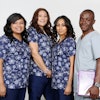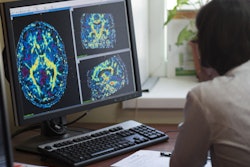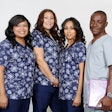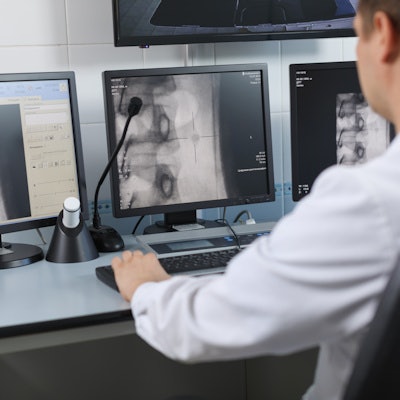
The novel coronavirus pandemic is challenging healthcare providers around the world to do their very best in the face of adversity and with a little-known adversary. We're looking at innovative and creative treatment options, while adapting our practices in ways that most of us have never had to consider.
In addition, we're facing unique challenges in the changing roles and responsibilities of our clinical and administrative staff. In diagnostic imaging, like many other practices, we are doubling down on an investment in remote reading, and this is already showing benefits.
Sutter Health's proactive thinking back in 2016 helped prepare us for circumstances today. Back then, my practice, headquartered in Sacramento and part of Sutter, committed to completely insourcing our night reads. This decision was not simple and was driven by a number of factors, including a desire to improve quality and service, further implement standard care pathways around the clock, and take back "control" of the 2 a.m. patient.
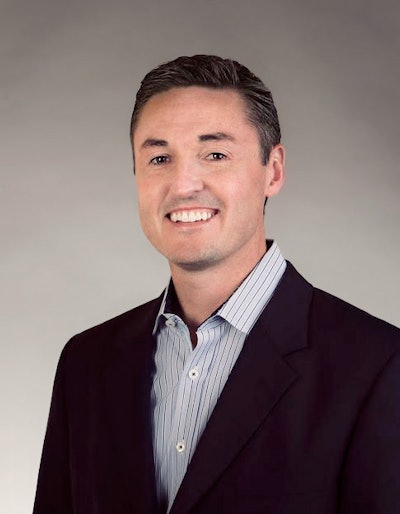 Dr. Jason Wiesner.
Dr. Jason Wiesner.Since February 2017, we have supported radiologists across our system with home-based reading diagnostic workstations. This flexibility is enabled by a fast and efficient viewer that performs server-side rendering and data streaming, allowing for production work in a variety of remote settings.
Our remote radiologists have the same access to the necessary clinical tools to interpret studies that they do onsite. Our "deconstructed PACS" technology stack was the catalyst that enabled this remote-reading flexibility, and it set the table for what we can accomplish now.
Little did we know at the time, but we had built the technology and business-process backbone that our radiologists would need to interpret studies from home as Sutter Health responds to COVID-19. As all of healthcare anticipates the projected surge of patients with COVID-19, half of our regularly scheduled shifts are now remote. Before the coronavirus pandemic, this was 10 shifts per day; now it's up to 23 shifts per weekday.
Remote reading can help
So much is changing on a daily basis as the U.S. and the world attempt to keep our citizens safe and healthy. Information seems to arrive on an hour-by-hour basis as we learn more about this disease. In addition, federal, state, and local governments are trying to keep people safe through measures to encourage social distancing.
On March 19, California Governor Gavin Newsom ordered the statewide shelter-in-place order of the state's 40 million residents, which meant that Californians could only leave their homes to work; go to grocery stores, pharmacies, and banks; receive medical care; and care for loved ones.
When he first heard Newsom's announcement, Dr. Tien Tran, a diagnostic radiologist on our team, was worried about childcare. He was concerned that he or his wife, an anesthesiologist, would have to stop working and stay home to care for their three young children.
As a result of our remote reading network, Tien can continue interpreting studies remotely. It's not an easy balance, but he can be at home with his young children while his wife works in the hospital. He can log on and read nonurgent exams and work after-hours emergency shifts without worrying about leaving his family at home or having to find a childcare provider, which is increasingly difficult and risky in the current environment.
Tien is one of 100 subspecialty radiologists on our team. As part of our business continuity planning, we decided that a subset will continue to report for their shifts in the hospitals, all backstopped by a larger cohort of remote readers. If one member of this onsite group is exposed to COVID-19 or becomes ill, we'll have to decide what to do next.
But for now, this is the best way to limit the potential spread of COVID-19 throughout our group, while at the same time being onsite for procedures and contrast coverage responsibilities.
More productive radiologists can help
We don't know what the future holds in terms of the coronavirus pandemic. We feel like we have weathered the first "surge" of patients and are bracing our radiologists for additional surges. It appears, thanks to some proactive leadership by several large companies in Northern California, and additionally by our state's Governor, that we have been successful in initially "flattening the curve," but we're preparing in every way we can. One scenario in particular that we're preparing for is a second surge of critically ill patients requiring chest CT scans.
Our radiologists reading remotely are overall more productive than when working similar shifts on site, which will help. We have improved the turnaround time on STAT exams by 50% when compared with our legacy PACS environment. In 2016, our median STAT turnaround time on STAT exams was 23 minutes; today, it's under 12 minutes.
Furthermore, across the entire Sutter Health organization, which includes 11 separate radiology groups across 24 hospitals interpreting almost 3 million exams each year, the overall median turnaround time improved by 20% once we converted to the technology stack currently live across the majority of Sutter Health's footprint.
The home-reading environment for Sutter Health's overnight radiologists includes a fully functioning workstation where radiologists have the same four diagnostic monitors, computer tower, keyboard, chair, and desk they would have onsite. The technology stack enables remote viewing and reporting with exactly the same diagnostic tools as in the office, including native advanced visualization. That means no delays in accessing current or prior studies, and no trade-offs with respect to diagnostic quality or productivity.
Flexible shifts are key
The foundation of our staffing model is 10-hour shifts. In January 2019, we launched "flexible" shifts, in which our radiologists commit to five hours of work in a given 24 hour-period from their home workstations. The studies assigned to radiologists working a flexible shift are all nonurgent, thereby allowing for some flexibility with turnaround time, only requiring the studies to be read within 24 hours to meet our service-level agreements. Not all studies are appropriate for flexible shifts, however. For example, because of Mammography Quality Standards Act (MQSA) requirements, mammography studies aren't currently a good fit for remote work.
Initially, we offered only one five-hour flexible shift each day. When volume increased by 5% in our practice, we added three more flexible shifts per day, for a total of four. In addition, we have several radiologists on "flex-standby" each day. If we have a surge of cases, as we may well have due to COVID-19, we can activate these additional flexible shifts by 9 a.m. each day.
Overall, this approach allows us to maintain a lean staffing model, flexing up with increasing volume, and allowing for natural, unpredictable variability that can be associated with in-office responsibilities.
What's next?
It's hard to say what is next on the horizon as we adjust to the "new normal" during the COVID-19 pandemic. As we prepare for additional surges in the coming weeks and months, we are fully engaged in business-continuity planning to ensure that our radiologists have the tools to provide our patients with access to the best possible care.
And equally important is the health and satisfaction of our workforce, including not only our radiologists but also our technologists and support staff.
Dr. Jason Wiesner, MBA, is the medical director of Sutter Health's Diagnostic Imaging Service Line and Executive Director of Imaging Informatics. He is a practicing radiologist in Sutter Medical Group, a part of the Sacramento, California-based Sutter Health independent delivery network.
The comments and observations expressed are those of the author and do not necessarily reflect the opinions of AuntMinnie.com.
